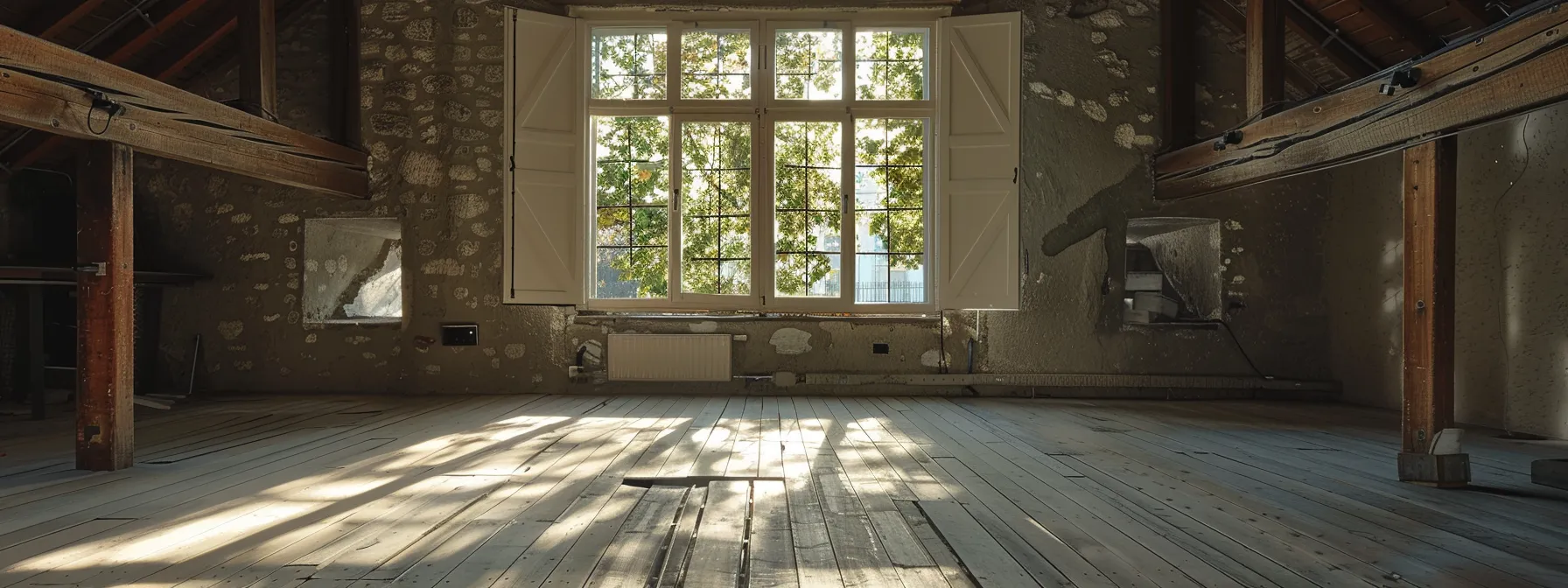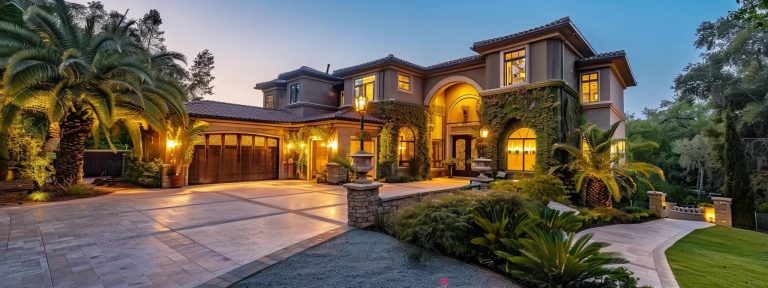Heads Up: When you purchase through links on our site, we may earn an affiliate commission at no cost to you.
In real estate investing, there’s one number that can make or break your deal before the hammer ever swings: ARV, or After Repair Value. Whether you’re flipping a single-family property, considering a commercial renovation, or trying to estimate what a distressed home might be worth after some updates, ARV is the starting point for smart decisions.
But what is ARV in real estate, exactly? Why does it matter so much to investors, lenders, and even real estate agents?
This guide breaks it all down in plain language. You’ll learn the ARV formula, how to calculate it, which tools to use, how lenders view it when approving a loan, and why it’s the foundation for assessing return on investment (ROI) in both residential and commercial property deals. To invest with confidence, you need to master ARV.
Let’s start by clarifying the term and why it matters so much.
Key Takeaways
- RV stands for After Repair Value—the projected worth of a property after improvements.
- Use the ARV formula: Current Value + Renovation Costs
- Accurately estimating ARV helps with budgeting, loan approval, and profit calculation
- Common mistakes include overestimating value, underestimating rehab, and ignoring market analysis
- Tools like MLS, spreadsheets, and appraisers can help improve accuracy
- ARV also applies to rentals, commercial properties, and refinancing strategies
What Is ARV in Real Estate and Why Does It Matter

ARV, short for After Repair Value, is the estimated value of a property after it has been renovated or improved. It’s a forward-looking valuation that real estate investors use to project the future resale or refinance value of a home after all repairs, updates, or upgrades have been completed.
Let’s say you’re looking at a property that’s currently outdated, but it’s in a neighborhood where remodeled homes sell fast. The current price is $150,000, and with $50,000 in renovation costs, you aim to sell it for $200,000 after the updates are complete. That $260,000 is your ARV—and it’s the number that dictates your budget, your offer, your loan terms, and your expected profit.
Here’s why ARV is a big deal:
- Investors use it to evaluate potential profit margins
- Real estate agents rely on it to guide seller pricing strategies
- Lenders use it to determine whether they’ll issue a hard money loan or approve refinancing
- Appraisers may reference it for a forward-looking valuation, particularly in cases involving distressed or foreclosed properties.
In flipping, for example, ARV drives nearly every decision, from construction scope to final listing price. Without an accurate ARV, you could seriously overpay for a fixer-upper, underestimate the required renovation, or miscalculate your expected return on investment.
Understanding ARV is also crucial for reducing risk. The real estate market isn’t static—demand, neighborhood growth, and buyer trends shift over time. If you misjudge what the market will bear, your profits shrink fast. That’s why solid research, detailed market analysis, and a realistic ARV are non-negotiables in real estate investing.
What to Include in ARV Estimations: Property Features and Costs
Your ARV is only as strong as the accuracy of your rehab estimate. Whether you’re flipping a single-family house or preparing a commercial property, you need a detailed scope of work that aligns with current market demand and resale expectations.
Here’s what to include when building a realistic cost projection:
Core Rehab Categories That Influence ARV
Kitchen Renovation
- Cabinets, countertops, backsplash, and flooring
- Appliances, plumbing, and electrical
- A modern kitchen can significantly increase market value
Bathroom Upgrades
- Vanity, toilet, tub/shower install
- Flooring, lighting, and tile work
- Often, the second most critical space in valuation
Roof, Foundation, and Structure
- New roof, gutters, and insulation
- Addressing foundation cracks or moisture issues
- Lenders and insurance companies pay close attention here
Interior Features
- Flooring (hardwood, carpet, tile)
- Walls, trim, and drywall repairs
- Paint, lighting, and smart home integrations
Exterior & Curb Appeal
- Landscaping, siding, windows, fencing
- Driveway, walkways, garage doors
- First impressions heavily influence the value
Mechanical Systems
- HVAC, plumbing, electrical
- Water heater, updated wiring, or panel
- Mandatory in most property inspections
Hidden Costs Investors Overlook
- Permits and municipal fees
- Trash removal, dumpsters, cleaning
- Homeowner association (HOA) approvals
- Temporary relocation of tenants (if renting)
Soft Costs That Impact Profit
- Interest on a bridge loan or hard money loan
- Insurance during renovation
- Property taxes accrued over rehab time
- Appraisal and closing costs when selling or refinancing
Tools to Build an Accurate Budget
| Tool | What It Does |
|---|---|
| Rehab Cost Estimator Spreadsheet | Tracks line-item costs by room and system |
| Online Estimators (e.g., HomeAdvisor) | Provides average repair costs by ZIP code |
| Contractor Bids | Real quotes from pros for your scope of work |
| Property Inspection Reports | Identifies hidden issues like mold or leaks |
Pro tip: Always add a 10–20% contingency to your rehab budget to account for potential overages. Mold in a wall or water damage under the flooring can quickly derail your profit margin if not accounted for.
- Instant feedback
- Valuable insights
- Actionable tips
Using ARV for Smart Investment Decisions

Now that you know how to calculate ARV and what it includes, it’s time to use it as a decision-making tool. For real estate investors, ARV isn’t just a projection—it’s a guide to help manage risk, set clear financial goals, and determine whether a property is worth the effort and capital.
Let’s break it down.
Define Your Investment Goal
Before crunching numbers, ask: What’s my goal?
- Flipping for quick cash
- Refinancing to pull equity
- Renting for long-term passive income
- Portfolio growth or asset diversification
Your strategy will influence how you interpret ARV. For example, flippers care about short-term resale value and profit, while landlords focus on equity, cash flow, and long-term appreciation.
Use ARV to Evaluate Profitability
Once you’ve got a projected after-repair value, use it to evaluate whether the property aligns with your expected return on investment (ROI).
Example:
- ARV: $250,000
- Purchase price: $160,000
- Rehab costs: $45,000
- Total investment: $205,000
- Estimated resale profit: $45,000
Now subtract additional expenses:
- Closing costs, taxes, insurance, staging, and holding costs
- Real estate fees (typically 5–6% of sale price)
- Any refinancing fees or interest from a bridge loan
If your profit margin shrinks to $20,000 or less, is the risk worth it?
Many investors aim for a 10–20% profit margin after all expenses. ARV lets you test whether the deal fits.
Align ARV with Exit Strategy
Your exit strategy matters just as much as your entry. Will you:
- Sell immediately post-renovation?
- Refinance and pull equity to reinvest elsewhere?
- Hold and rent for consistent income?
In all cases, your ARV helps:
- Forecast appraised value for financing
- Determine home equity
- Set rental pricing if pivoting to long-term tenants
- Project future appreciation in a rising market
Minimize Risk with Conservative Estimates
The worst mistake is overestimating ARV. If you assume a $ 300,000 resale and it turns out to be $ 250,000, your profit and plan will fall apart.
To minimize investment risk, always:
- Base comps on similar nearby sales (not best-case scenarios).
- Use multiple data sources (MLS, Redfin, Rocket Mortgage, Zillow).
- Get a second opinion from a real estate agent or appraiser.
How Lenders Use ARV in Loan and Refinance Decisions

When you apply for funding—whether it’s a hard money loan, a bridge loan, or a refinance—lenders don’t just care about what the property is worth today. They’re looking ahead. That’s why ARV is such a critical figure in the underwriting process.
Let’s explore how financial institutions and private lenders use ARV in the real world.
ARV-Based Lending: The Basics
Most rehab and flip financing options are structured around the After-Repairs Value (ARV), not the current value.
That means the loan amount you qualify for is a percentage of the projected after-repair value, not what you paid for the property.
This is especially true for:
- Hard money loans
- Bridge loans
- Refinance options after renovations
Typical loan-to-value (LTV) ratios based on ARV might be:
- 70–75% ARV for hard money loans
- 80–85% ARV for seasoned investors
- Lower percentages for high-risk or first-time borrowers
So, if the ARV is $300,000 and the lender offers 70% LTV, your potential loan amount is:
$300,000 x 0.70 = $210,000
This figure must cover both the purchase price and the rehab costs. If your total project budget exceeds that, you’ll need to bring more cash.
Refinancing Based on ARV
ARV also plays a role when you’re refinancing a renovated property, especially with strategies like:
- BRRRR (Buy, Rehab, Rent, Refinance, Repeat)
- Equity-based refinancing through traditional lenders or private banks
- Pulling out capital to fund your next deal
In this scenario, the lender will order a post-rehabilitation appraisal to confirm the after-repair value (ARV). The more accurate your estimate, the better positioned you are for:
- A higher home equity loan
- Lower interest rates
- Improved loan terms
- More funding for the next property in your portfolio
Insurance, Taxes, and ARV
ARV can also affect other financial factors:
- Property insurance premiums may be based on the projected value post-renovation
- Property taxes could increase if the county reassesses after improvements
- Some policies and lenders require coverage based on ARV to protect the full asset value
Ensure your budget, timeline, and financing plans account for these increases. Failing to address these can lead to unexpected costs or delays in your exit strategy.
Common Mistakes When Estimating ARV
Misjudging ARV is one of the quickest ways to turn a great opportunity into a money pit. A number that’s too high inflates your budget, your loan expectations, and your projected profit. A number that’s too low might cause you to walk away from a deal with real potential.
Here are the most common mistakes investors make when calculating after-repair value—and how to avoid them.
Overestimating Market Value
This happens when investors get overly optimistic about:
- The future sales price
- The impact of renovations
- The demand in the neighborhood
Basing your ARV on the highest recent comp in the area—or on idealized finishes—sets you up for disappointment.
Fix it: Use real comps, not dream scenarios. Match:
- Property type
- Square footage
- Lot size
- Bedroom/bathroom count
- Condition post-renovation
- Proximity (within half a mile if possible)
Underestimating Renovation Costs
It’s easy to overlook hidden expenses, such as foundation cracks, mold, plumbing, or roof issues. If you don’t account for labor shortages or material delays, your timeline and budget can explode.
Fix it: Always:
- Walk the property with a licensed contractor
- Use detailed spreadsheets or rehab tools
- Add a 10–20% buffer for unexpected costs
- Account for permits, insurance, and holding costs
Skipping Market Analysis
ARV depends heavily on market demand. If the neighborhood’s cooling off, your $300K ARV might shrink before you even list the property.
Fix it: Monitor:
- Sales volume in your ZIP code
- Price per square foot trends
- Time on market
- Comparable listings using MLS, Redfin, or Rocket Mortgage
Don’t assume the market will carry you. Base your valuation on current data, not future hope.
Ignoring Exit Costs
You might hit your ARV target, but after factoring in:
- Agent commissions
- Transfer taxes
- Final loan fees
- Closing costs
- Repairs requested by buyers
…your profit margin could shrink fast.
Fix it: Run your numbers after you deduct those expenses, not before.
Neglecting Location Variables
Even two blocks can make a difference. School districts, crime rates, HOA rules, and zoning changes can all impact value.
Fix it: Drive the neighborhood, speak to neighbors, and research local policies and homeowner associations. Don’t base your ARV solely on numbers—use your feet and eyes too.
Tools and Resources to Determine ARV Accurately

Calculating ARV isn’t just about basic math—it’s about sourcing solid data, using the right tools, and trusting experts when it counts. The good news? There are plenty of resources available to help investors make informed decisions.
Here’s what to use—and how to use it effectively.
MLS (Multiple Listing Service)
The MLS is the gold standard for finding accurate, up-to-date comps. It includes:
- Closed sale prices
- Time on market
- Days since last renovation
- Interior photos for condition comparisons
Most investors can’t access the MLS directly, but a licensed real estate agent or broker can pull custom reports to help you evaluate market value.
Pro Tip: Request a CMA (Comparative Market Analysis) that includes similar flips and renovated sales from the past 6 months.
Online Real Estate Platforms
Tools like Zillow, Redfin, and Rocket Mortgage offer:
- Instant estimated values (Zestimates, etc.)
- Recently sold comps
- Price per square foot analysis
- Neighborhood trends
While not as accurate as MLS, these platforms are helpful for quick research and spotting value shifts in a market.
Property Renovation Calculators
If you’re estimating rehab costs to build your ARV, these tools are gold:
- Rehab Valuator – Great for flipping projections and ROI tracking
- House Flipping Spreadsheet – Excel-based with repair templates and profit models
- HomeAdvisor – Shows national and local cost averages for renovations (e.g., bathroom, kitchen, roof, etc.)
Additionally, having a trusted contractor on call for walkthroughs adds significant credibility to your estimates.
Appraisers and Inspection Reports
A licensed appraiser can offer a certified opinion of value, which is especially useful when seeking hard money loans, refinancing, or determining the after-repair value (ARV) for complex commercial properties.
Meanwhile, inspection reports expose hidden issues that could destroy your profit margin if unaccounted for.
What to request:
- Pre-purchase inspections
- Scope-of-work estimates
- Full post-repair appraisals (to confirm ARV)
Custom Tools You Should Be Using
| Tool Type | Why It Matters |
|---|---|
| Budget Spreadsheet | Helps track line-item rehab costs |
| ARV Calculator | Automatically applies the ARV formula |
| ROI Calculator | Projects return after all costs & exit fees |
| CRM or Deal Tracker | Keeps your pipeline and ARV comparisons in order |
Many real estate pros also use Google Sheets, Excel, or platforms like Podio and PropStream to track deals and run ARV-based scenarios.
Commercial Properties, Rentals, and ARV
While ARV is best known in the world of house flipping, its influence extends well beyond residential deals. Investors working with commercial property, rental units, or long-term buy-and-hold strategies also benefit from understanding ARV—it just plays a slightly different role.
Does ARV Apply to Commercial Real Estate?
Yes—but with nuance.
In commercial real estate, ARV isn’t just about the structure—it’s about income. Investors often factor in not only the cost of renovation, but also the projected income once repairs are complete.
Key metrics to consider alongside ARV:
- Net Operating Income (NOI) after renovations
- Cap rate based on ARV
- Renovation impact on tenant appeal, leasing rates, and long-term value
For example, improving a small office building may raise its value from $900,000 to $1.2 million. That $300,000 increase becomes the basis for your refinancing, investment strategy, and exit options.
ARV for Rental Properties
When it comes to buy-and-hold investing, ARV is less about resale and more about equity, financing, and portfolio growth.
Here’s how it matters:
- You may buy, renovate, and then refinance the rental using the higher ARV
- This helps you access home equity, reduce your initial down payment, or fund the next deal
- Lenders will base their loan terms on the post-renovation appraisal, not the initial price
This approach is core to the BRRRR method (Buy, Rehab, Rent, Refinance, Repeat), where the goal is to extract cash while still retaining ownership of the property for its cash flow and long-term appreciation.
When ARV Isn’t Everything
ARV is powerful—but in certain cases, it’s not the final decision-maker.
- In renting, you also need to understand gross yield, tenant demand, and management costs
- In commercial deals, income-based valuation models (like NOI and cap rate) may outweigh resale value
- If your exit strategy is long-term holding, equity growth, property tax impacts, and insurance cost projections play a bigger role
Still, knowing the ARV helps you:
- Refinance at better terms
- Evaluate renovation return on investment
- Make smart decisions in a competitive market
Frequently Asked Questions
What does ARV mean in real estate?
ARV stands for After Repair Value—it’s the estimated value of a property after it’s been fully renovated.
How do I calculate ARV?
Use this formula: ARV = Current Property Value + Estimated Repair Costs
Why is ARV important for real estate investors?
ARV helps determine potential profit, guide investment decisions, and secure the right financing terms from lenders.
Can I use ARV for rental properties?
Yes. ARV is useful when refinancing or building equity after a renovation, even if you plan to hold and rent the property in the long term.
Who uses ARV?
Real estate investors, agents, appraisers, and lenders, especially when issuing hard money loans, evaluating flips, or approving refinance applications.
Final Thoughts: Understanding the Value Behind the Value
At first glance, ARV might seem like just another number in a spreadsheet—but for real estate investors, it’s a decision-making powerhouse. Knowing what a property will be worth after renovation is key to buying right, budgeting smart, and profiting confidently.
Whether you’re flipping houses, buying rentals, or looking at commercial deals, ARV helps you evaluate risk, forecast returns, and align your investment with your financial goals. It affects your loan approvals, your exit strategy, and your ability to compete in fast-moving markets.
Ignore it, and you’re guessing. Use it well, and you’re in control.















